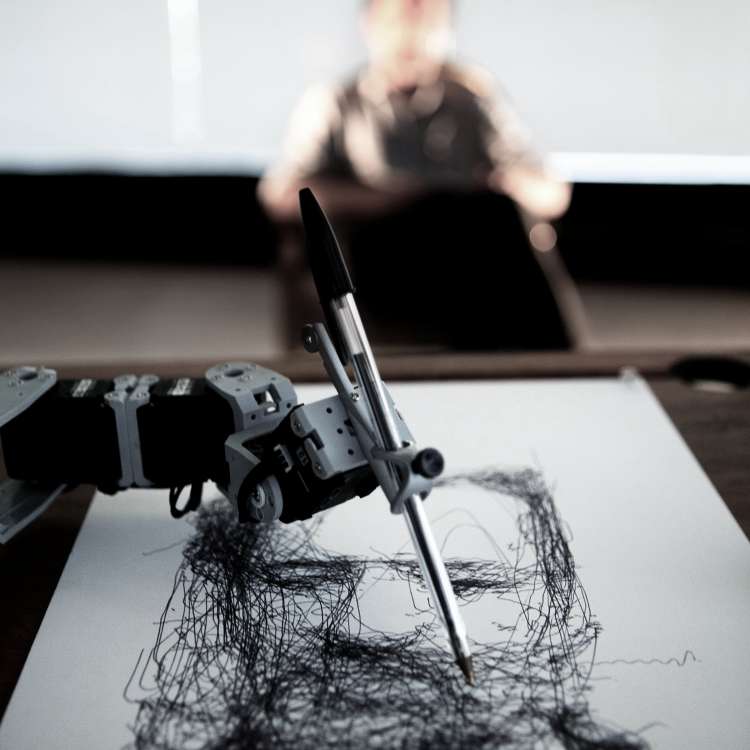About
Patrick Tresset
Brussels based and French artist Patrick Tresset develops artistic installations featuring robotic agents. His artistic installations use computer systems to sublimate the expressive and obsessive aspects of robot behaviour. These systems are influenced by research on human behaviour, more specifically on how humans depict their fellow human beings, perceive works of art and relate to robots. At the same time, Tresset also uses robots and autonomous computer systems to explore drawing and painting practice.
His work, individual or collective, has been exhibited internationally in institutions such as the Grand Palais (Paris), the Centre Pompidou (Paris), the Prada Foundation (Milan), the Tate Modern (London), the Israel Museum (Jerusalem), Victoria & Albert Museum (London), MMCA (Seoul), BOZAR (Brussels) and at events such as Ars Electronica, Update_5, BIAN, Japan Media Festival, where he has received numerous awards...
Originally a painter, Tresset is part of a generation of artists from the Goldsmiths' computer department. Co-director of AIkon-II, he has also developed and taught a creative robotics module and published research articles in the fields of computational aesthetics, social robotics, drawing and AI. Since 2018, he has been an Assistant Professor at the University of Canberra in Australia.
Medias
Theatralisation, illusions et artifices technologiques
Patrick will talk about his practice and how time-based embodied artworks using contemporary technologies play with the audience’s senses, perception, reactions and memories. Patrick investigates drawing practices and exhibits performative installations that explore human traits. He is better known for his work using robotic agents as stylised actors His work has been internationally exhibited in association with major museums such as The Grand Palais (Paris), The Pompidou Center (Paris), Prada foundation (Milan), Tate Modern (London), Museum of Israel (Jerusalem), Victoria & Albert Museum (London), MMCA (Seoul), BOZAR (Brussels) and at events such as Ars Electronica, Update_5, BIAN
